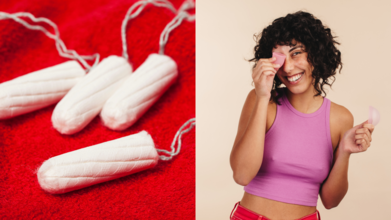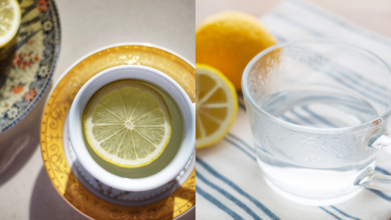- Health Conditions A-Z
- Health & Wellness
- Nutrition
- Fitness
- Health News
- Ayurveda
- Videos
- Medicine A-Z
- Parenting
- Web Stories
Your Ethnicity May Be Putting You At Higher Risk For This Major Nerve Disorder

(Credit-Canva)
There are many genetic disorders, or diseases that only occur in people of a certain ethnicity. MedlinePlus explains that these diseases occur among people whose ancestry lies in a specific geographical location. This is because people in the same ethnic group often share versions of genes which were passed down by a common ancestor. Another such diseases have been found in a new study, according to a news release by the American Academy of Neurology.
A new study has found something puzzling: Hispanic people are more likely to develop nerve damage called peripheral neuropathy than white people, and we don't know exactly why.
Even after looking at well-known health issues, lifestyle choices, and social situations, Hispanic individuals were still 32% more likely to have this condition. Experts believe there might be some unknown social factors at play that we need to discover. Finding these missing pieces is crucial for future research.
What is Peripheral Neuropathy?
Peripheral neuropathy happens when the nerves outside your brain and spinal cord get damaged. This often leads to weakness, numbness, and pain, most commonly in the hands and feet.
It's been observed that in the United States, Hispanic and Black individuals tend to have higher rates of peripheral neuropathy than white people, but the exact reasons for these differences aren't yet clear.
What the Study Looked At
Researchers examined health information from over 8,000 people. About 13% of them had peripheral neuropathy. The study participants' average age was 61. The research team considered many factors that can increase the risk of neuropathy, including:
- Age and gender
- Health conditions like waist size, blood pressure, blood sugar, and cholesterol levels
- Daily habits such as how much they exercise and what they eat
- Social aspects like whether they had enough food, their household income, and if they had health insurance
The study generally found that people with neuropathy were more likely to have diabetes, high blood pressure, a larger waist, and lower income. They also tended to be less physically active.
Unexplained Differences Remain
Generally, the study found that individuals with neuropathy tended to have diabetes, high blood pressure, larger waist circumference, and lower incomes. They also reported being less physically active.
When researchers initially adjusted only for age and sex, both Hispanic and Black individuals showed higher odds of peripheral neuropathy compared to white individuals. However, after accounting for all other risk factors, the odds for Black individuals became similar to those of white people. This was not the case for Hispanic individuals, who continued to show an increased risk of peripheral neuropathy even after all other known factors were considered.
Role of Social Factors
The study highlighted the significant influence of known social factors on peripheral neuropathy risk among Hispanic individuals. For instance, being uninsured increased their risk by 56%, and experiencing food insecurity raised it by 48%.
Given the growing percentage of Hispanic individuals in the United States, the researchers concluded that future observational studies should prioritize identifying the unmeasured risk factors contributing to peripheral neuropathy in this population
The Itchy Truth About Pads and Tampons: What Your Period Products Are Not Telling You

For something that’s supposed to be a monthly saviour, your sanitary pad could actually be a trouble in disguise. If you’ve ever spent your period feeling itchy, sore, or just...off, you’re not imagining it. According to gynaecologist Dr Vaidehi Marathe, many conventional pads and tampons contain elements that don’t quite agree with your body.
Itchiness is a common complaint during menstruation, but most people blame sweat, heat, or hormones. The real problem, says Dr Marathe, might be your pad itself. Many commercial pads are loaded with synthetic materials, added fragrances, and chemical adhesives that can irritate the delicate skin in your intimate area. That persistent itch could be your body’s way of saying, please get this thing off me.
Rashes, roughness, and friction
It doesn’t end with itching. If you’ve ever developed a rash down there during your period, Dr Marathe says your pad’s texture or material could be behind it. "Poor-quality materials or excessive friction can cause chafing, redness, and irritation," she says in an Instagram video.
Even tampons, which many prefer for comfort and convenience, aren’t totally innocent. High-absorbency varieties are known to dry out the vaginal lining, leading to discomfort and even micro-tears. Dr Marathe warns that such dryness disturbs the natural balance of the vaginal mucosa, and that’s when things can start to get really unpleasant.
That smell isn’t just your period
While menstruation has a natural odour, a strange or strong scent often comes from bacterial buildup, not your body. Pads, especially the non-breathable kind, can trap moisture and create a breeding ground for bacteria. Dr Marathe points out that the odour is often caused by bacteria thriving in that warm, moist environment.
Healthier swaps
You don’t have to suffer for the sake of convenience. Look beyond the supermarket aisle. Cloth pads, menstrual cups, and period underwear are all gentler options that are free of harmful chemicals and better for your skin and the environment. They allow the area to breathe and are less likely to cause irritation or dryness.
Menstrual cups in particular have gained popularity for being economical, eco-friendly, and surprisingly comfortable once you get the hang of them.
Your period deserves better
Periods are already uncomfortable enough without adding allergic reactions, rashes, or infections to the mix. If you’re constantly battling irritation or feeling ‘off’ during your cycle, it’s worth examining what’s coming into contact with your skin for hours at a stretch.
What Happens When You Drink Lemon Water for 30 Days?

Many people start their day with a glass of lemon water, hoping for a range of health benefits—from better skin to improved digestion. But what actually happens when you stick to this habit every day for a month? According to gastroenterologist Dr Saurabh Sethi, lemon water can offer some real advantages, as long as you are aware of a few important points.
Lemons Pack a Big Punch
Lemons are packed with more than 30 beneficial plant compounds, says Dr Sethi. These include antioxidants and anti-inflammatory agents that support your body's daily housekeeping on a cellular level.
But freshly squeezed is important. “Pasteurised lemon juice often loses a significant portion of its nutritional value,” Dr Sethi explains.
Absorption Gets a Boost
While you are sipping away, thinking you are just hydrating enough, something pretty important is happening in the background. The natural acidity of lemons can help your body absorb minerals more effectively, particularly iron, according to Dr Sethi. That means your morning lemon ritual might be giving your iron supplements or spinach salads a bit of extra firepower.
And lemon water does not magically "alkalise" your body. But what it does do is help your digestive system set the stage for better nutrient uptake.
Skin Goals and Collagen Dreams
If you are secretly hoping for that elusive “glow-up” by day 30, you might be in luck. Lemons are a great source of vitamin C, a key player in the production of collagen, the protein responsible for keeping your skin firm, your joints cushioned, and your connective tissues in top shape.
Dr Sethi says that daily lemon water may support healthier skin from the inside out. Think of it as your internal skincare serum.
The Bitter Truth
As Dr Sethi points out, lemon water might not be ideal for everyone, especially those with acid reflux or sensitive stomachs. The very same acidity that helps with mineral absorption can irritate the oesophagus lining or worsen heartburn in susceptible folks. If you have ever felt that familiar burn after a glass of lemony water, your body is throwing a sign.
Rage Recedes After 50 In Women But Suppressed Anger Could Be Harming Your Health, Here's How

Credits: Freepik
For decades, menopause research has zeroed in on hot flashes, sleep disruption, and depression. But anger? Not so much. A new study is now filling that gap, offering one of the most comprehensive looks yet into how women experience anger across the menopause transition—and what researchers found is both unexpected and revealing. Turns out, anger actually begins to fade in midlife, particularly after age 50. The only catch? While outward expression of anger declines, many women still carry unspoken frustration below the surface.
Here's decoding the science of why this happens, what it means for women’s health, and how the emotional shifts during menopause could actually offer some psychological relief—if not resolution.
While menopause is typically framed through the lens of estrogen drops, sleep loss, and brain fog, its emotional dimensions—especially anger and irritability—remain underexplored.
This latest research, published in Menopause, the journal of The Menopause Society, set out to change that. Drawing on data from the Seattle Midlife Women’s Health Study, the study tracked over 500 women aged 35 to 55 through various stages of reproductive aging. The focus wasn’t just on mood, but on the texture of anger—how it surfaces, how it’s controlled, and how it evolves over time.
What researchers discovered was a dramatic shift- all types of anger, such as angry outbursts, reactive anger, and even passive hostility, decreased significantly with age but the type of anger that is kept inside called suppressed anger remained constant.
This is important because although less external anger may appear to be emotional maturity, holding in anger without ventilating it has consequences.
Link Between Aging and Emotion Regulation
What causes the decline in visible anger at midlife? A combination of hormonal shifts and emotional realignment. With changes in estrogen levels and eventual decline during perimenopause and menopause, many women experience mood swings and irritability. These shifts are well-documented. But what happens after the turbulence subsides?
The researchers found that women in their late reproductive and postmenopausal stages showed a stronger ability to regulate anger. One possible reason is the rewiring of emotional circuits in the brain as women age. With time and life experience, the prefrontal cortex responsible for executive function and emotional control may become more adept at managing reactive emotions like anger.
There's more to it than biology, social and psychological maturity also play a role. Women in midlife often report a greater sense of self-assuredness and less concern with others' opinions.
How Do Bottled-Up Emotions Affect Health?
Though anger outbursts and aggression will decrease, more of a worry is the chronic suppression of anger. Suppressed anger has been associated with all manner of physical and mental illness, including heart disease and depression.
Anger that simmers internally, without a release valve, keeps the body in a low-grade state of stress. It activates the sympathetic nervous system, raises cortisol levels, and contributes to systemic inflammation—an established risk factor for chronic disease.
Studies dating back to the 1980s have shown that women with high “trait anger” (the tendency to become angry easily) are more likely to experience elevated blood pressure and heart disease over time. More recent research found that higher anger scores were associated with thicker arterial walls—a sign of early atherosclerosis.
Emotionally, suppressed anger is a known contributor to depressive symptoms, especially during the menopause transition. Women undergoing hormone therapy may be particularly vulnerable, as hormone shifts can amplify emotional responses.
The mental health side of the menopause transition can have a significant effect on a woman’s personal and professional life. Fluctuations in hormone levels during this stage can result in severe mood swings associated with anger and hostility. Educating women about this reality is essential to improving quality of life.
Hostility—a persistent emotional readiness for conflict—differs from anger in that it’s more closely associated with anxiety and hypervigilance. Though it’s less outwardly visible, it takes a psychological toll and can affect relationships, work dynamics, and self-esteem.
Even if a woman isn’t visibly angry, she might still be carrying an emotional load that affects her health.
This study offers a rare glimpse into how anger matures—and softens—as women age. It not only validates what many women report anecdotally (feeling less reactive or combative as they enter their 50s and beyond) but also pushes the medical community to consider anger as a vital sign in midlife health.
Crucially, the study shows that age and reproductive stage are both significant. Anger doesn’t just fade because women get older. It seems to decline most notably after the late reproductive stage, suggesting that hormonal changes during menopause may directly influence emotional regulation.
What Does This Directly Affect Women Health?
Understanding that anger evolves during midlife can be empowering. It helps normalize a broad range of emotional experiences and encourages proactive approaches to mental well-being.
Here are some strategies experts recommend:
- Track your emotional patterns. If you're noticing less anger but more inner frustration, it might be time to explore outlets like therapy, journaling, or movement-based practices.
- Don’t ignore suppressed anger. Repression isn’t resolution. Bottled emotions can surface in other ways—anxiety, fatigue, chronic pain.
- Ask your doctor about emotional symptoms. Mental health during menopause is often sidelined in medical discussions. Bring it to the forefront.
We’re at a turning point in how menopause is discussed—not just as a medical event but as a profound emotional transition. Studies like this broaden the conversation and deepen our understanding of midlife psychology.
As women age, their emotional range doesn’t shrink. It evolves. Anger becomes quieter, more internalized, and perhaps more complex—but with the right awareness and support, it can also become more manageable.
© 2024 Bennett, Coleman & Company Limited

